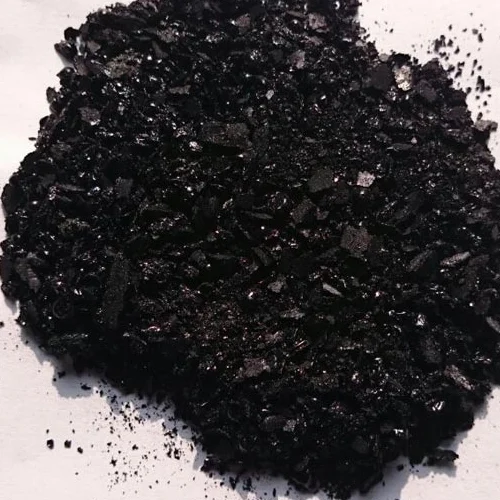natural indigo dyes manufacturers
The Evolution of Natural Indigo Dyes Manufacturing
Indigo dye, one of the oldest dyes used in human history, has captivated artisans, designers, and textile enthusiasts for centuries. Natural indigo, derived from the leaves of the indigo plant, primarily *Indigofera tinctoria*, has regained popularity in recent years as consumers increasingly seek sustainable and eco-friendly alternatives to synthetic dyes. This article explores the journey of natural indigo dye manufacturers, the process of producing this captivating hue, and its significance in the modern textile industry.
Historical Significance
Historically, indigo dye has been revered for its rich, deep blue color. The dyeing process was traditionally labor-intensive, requiring skilled artisans to extract indigo from the plant and apply it to textiles. Civilizations across the globe—ranging from ancient Egyptians to Japanese artisans—have employed indigo in their clothing, art, and even currency. The process of natural indigo dyeing is steeped in cultural practices and has resulted in unique textile traditions, such as the tie-dye technique known as Shibori in Japan and the Indian Bandhani.
The Process of Natural Indigo Dyeing
The journey from plant to dye is intricate. Initially, the indigo leaves are harvested and fermented in water, a process that triggers the release of the pigment. This fermentation can take several days, during which the leaves transform into a thick, greenish substance known as “indigo stock.” Following the fermentation, the stock is oxidized, turning it into the iconic blue pigment known as indigo blue. The dye can then be used to color fabrics through various methods, including immersion, where fabric is submerged in the dye bath multiple times to achieve the desired depth of color.
Modern advancements have allowed natural indigo dye manufacturers to enhance these traditional practices. Today, they may utilize specific strains of the indigo plant, fine-tune fermentation times, and integrate contemporary dyeing techniques to ensure consistency and quality. Furthermore, manufacturers are keenly aware of environmental impacts and strive for sustainable practices, reducing water usage and minimizing chemical runoff.
natural indigo dyes manufacturers

The Rise of Sustainable Fashion
As the fashion industry evolves, a significant shift toward sustainable practices has taken root. Natural indigo dyeing aligns perfectly with this movement. Consumers are increasingly conscious of the environmental and ethical implications of their clothing choices. The use of natural indigo not only supports agricultural biodiversity but also promotes fair trade practices for the farmers who cultivate the indigo plants.
Artisans and designers passionate about sustainable fashion are now collaborating with natural indigo dye manufacturers to create unique, eco-friendly collections. These partnerships not only elevate the aesthetic appeal of garments but also tell a story of heritage, craftsmanship, and environmental responsibility. Products dyed with natural indigo are often seen as luxury items, signaling a new era where ethics and aesthetics coexist harmoniously.
Challenges Facing Manufacturers
Despite its resurgence, manufacturers of natural indigo dye face challenges. The process remains labor-intensive, and the cost of production can be significantly higher than that of synthetic dyes. Additionally, sourcing high-quality indigo plants poses another barrier, as industrial agriculture practices can threaten the biodiversity of indigo species. However, many manufacturers are addressing these issues by investing in sustainable agricultural practices and developing community-centric initiatives that support local farmers.
Conclusion
The realm of natural indigo dye manufacturing is vibrant and rapidly evolving. As the demand for eco-friendly and sustainable textiles continues to rise, natural indigo stands at the forefront of this movement. By marrying traditional craftsmanship with modern innovation, manufacturers are not only preserving a rich cultural heritage but also meeting the contemporary demands for sustainability in fashion. The future of natural indigo dye is bright, promising a return to nature’s palette in a world increasingly dominated by synthetic alternatives.
-
The Timeless Art of Denim Indigo Dye
NewsJul.01,2025
-
The Rise of Sulfur Dyed Denim
NewsJul.01,2025
-
The Rich Revival of the Best Indigo Dye
NewsJul.01,2025
-
The Enduring Strength of Sulphur Black
NewsJul.01,2025
-
The Ancient Art of Chinese Indigo Dye
NewsJul.01,2025
-
Industry Power of Indigo
NewsJul.01,2025
-
Black Sulfur is Leading the Next Wave
NewsJul.01,2025

Sulphur Black
1.Name: sulphur black; Sulfur Black; Sulphur Black 1;
2.Structure formula:
3.Molecule formula: C6H4N2O5
4.CAS No.: 1326-82-5
5.HS code: 32041911
6.Product specification:Appearance:black phosphorus flakes; black liquid

Bromo Indigo; Vat Bromo-Indigo; C.I.Vat Blue 5
1.Name: Bromo indigo; Vat bromo-indigo; C.I.Vat blue 5;
2.Structure formula:
3.Molecule formula: C16H6Br4N2O2
4.CAS No.: 2475-31-2
5.HS code: 3204151000 6.Major usage and instruction: Be mainly used to dye cotton fabrics.

Indigo Blue Vat Blue
1.Name: indigo blue,vat blue 1,
2.Structure formula:
3.Molecule formula: C16H10N2O2
4.. CAS No.: 482-89-3
5.Molecule weight: 262.62
6.HS code: 3204151000
7.Major usage and instruction: Be mainly used to dye cotton fabrics.

